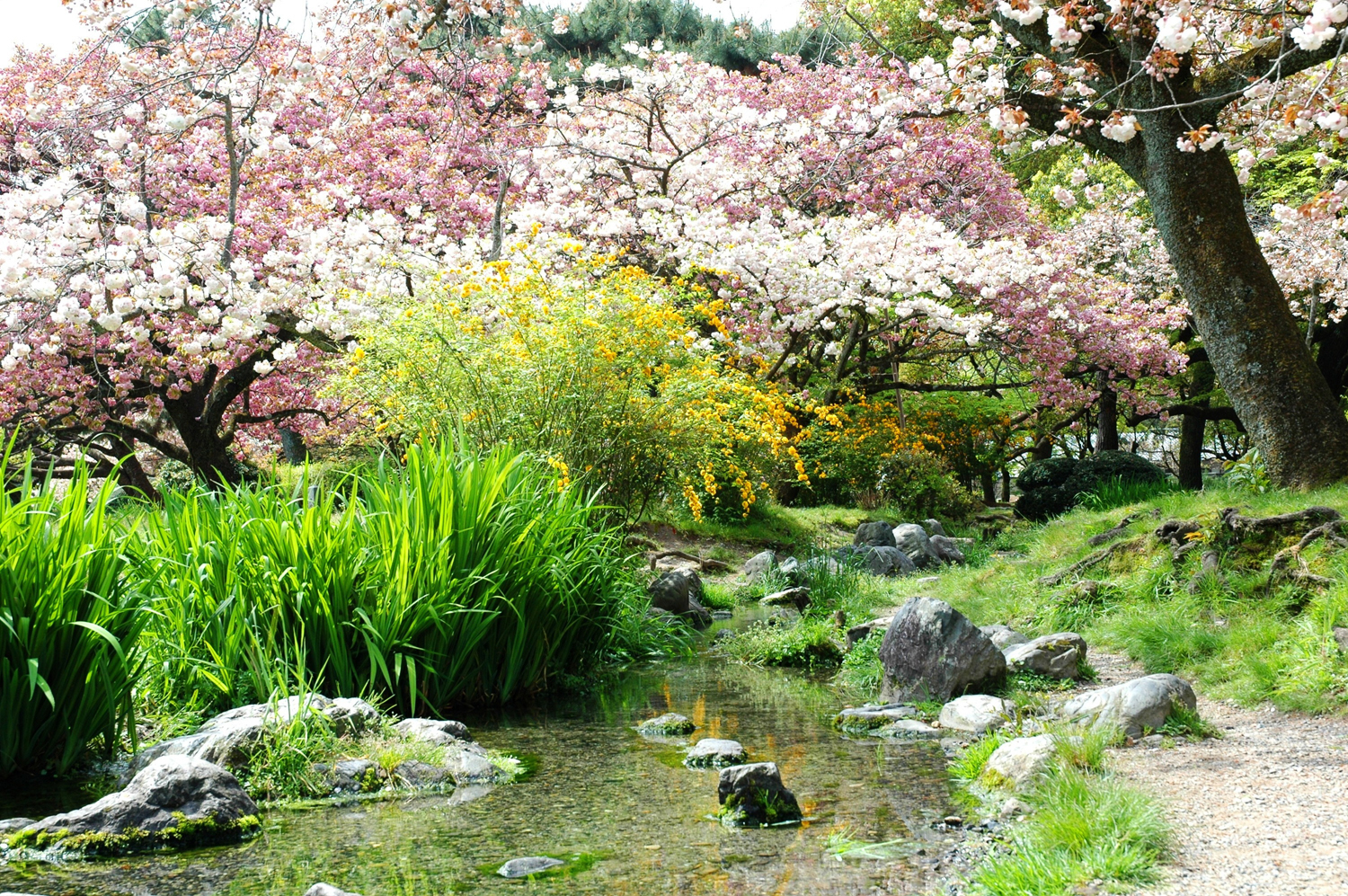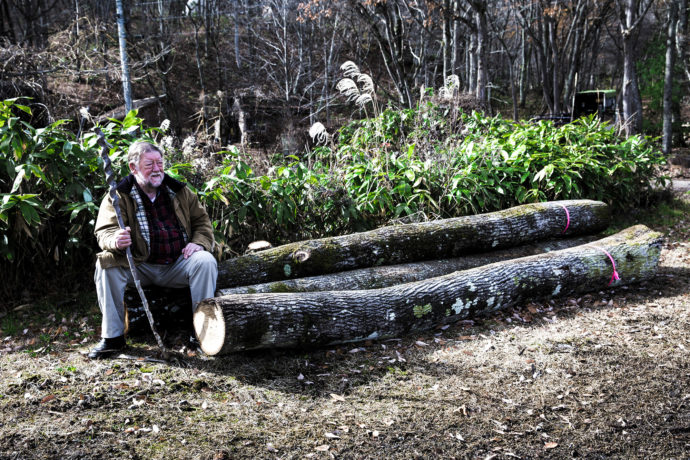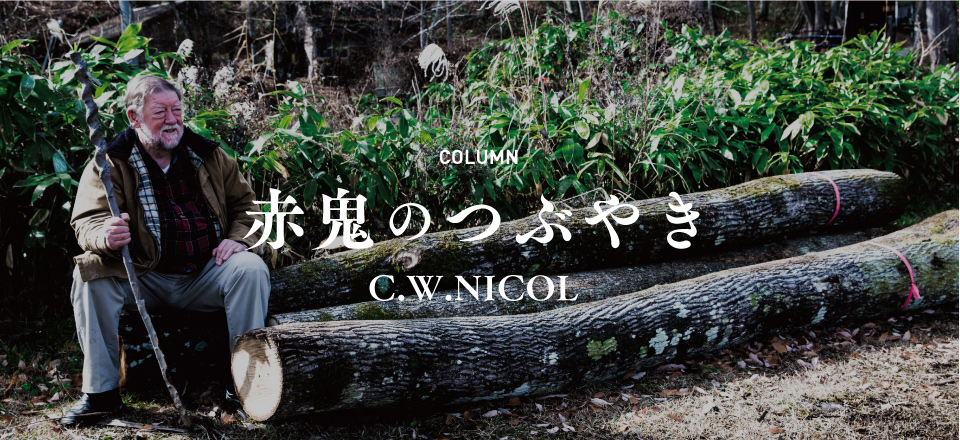Column
【赤鬼のつぶやき C.W.ニコル】イングリッシュオーク (English oak)
私たちのアファンの森では、基本的には日本原産の木を育てるようにしています。しかし、教育用に植えている外来種もいくつかあり、イングリッシュオーク(ヨーロッパナラ/学名Quercus robur)もその1つです。この木は、私が生まれ育った英国における最も象徴的な木です。西欧では多くの国々で、軍の将校や警察の高官の肩章に黄金色に輝くオークの葉とドングリがあしらわれているのを目にするでしょう。ホレーショ・ネルソン提督と言えば、1805年のトラファルガー海戦でナポレオン率いるフランス・スペイン連合艦隊を破った英国海軍の英雄ですが、その時代、戦艦の建造に大量のオークが使われました。ネルソン提督の旗艦として知られるHMSヴィクトリーのような100門を超える大砲を積んだ大型の戦艦では、一隻造るのに樹齢150~300年という立派なオーク約2千本、さらにニレやマツなどが700本も必要でした。オークは最も珍重された堅木だったのです。
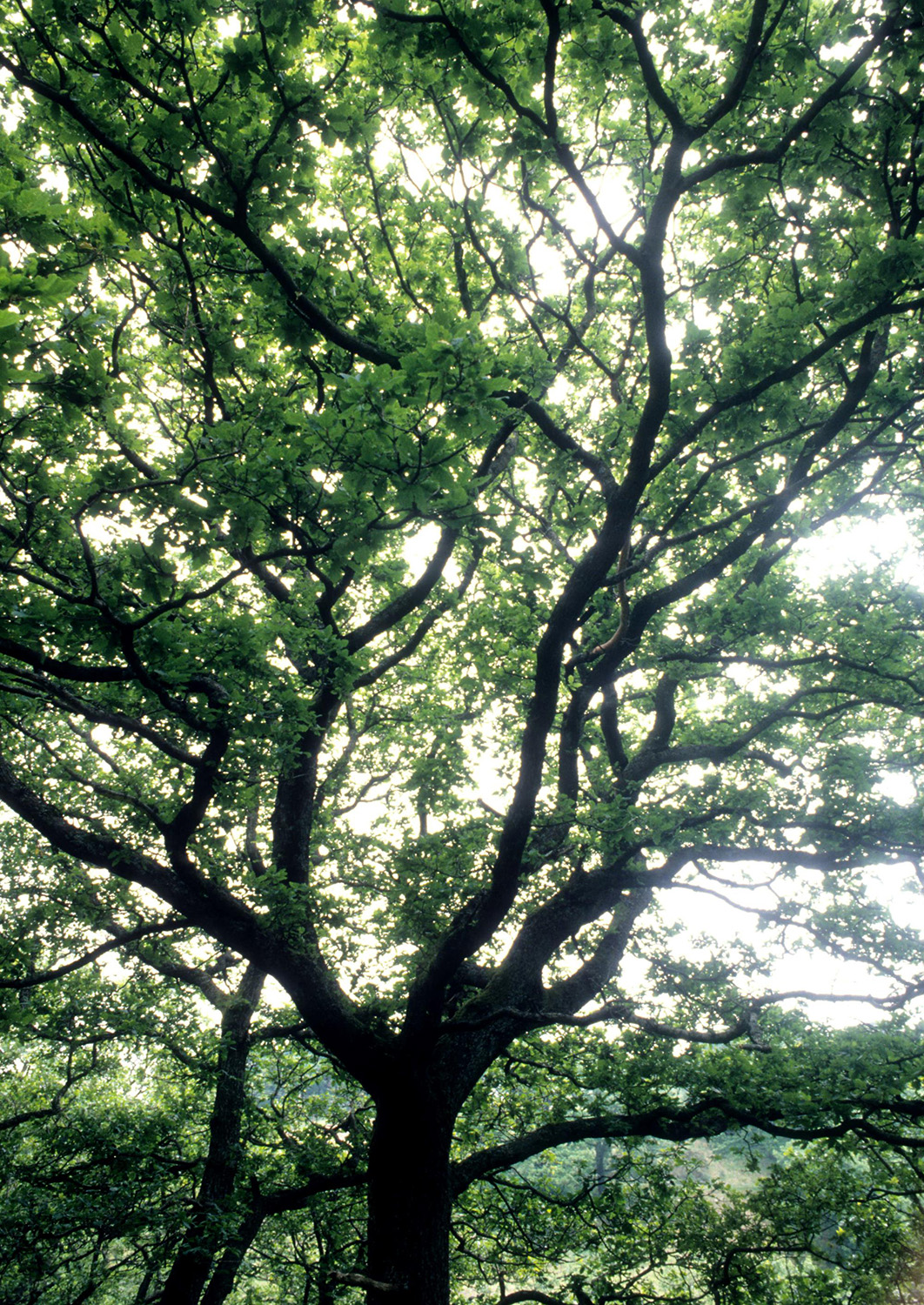
2001年、約200本のオークの苗木が日本へ運ばれ、埼玉県の苗床場で1年をかけて育てられました。翌2002年1月30日、日英同盟100周年を祝して、1本の苗木が東京の英国大使館の敷地に植樹されました。日英同盟は、両国の海軍にとって非常に大きな意味を持つものです。植樹式は、サー・スティーブン・ゴマソール駐日英国大使(当時)、川口順子環境大臣(同)を初め、沖縄の少年が1人、北海道の小学校校長が1人、この私、C.W.ニコルが参列して行われました。また、長野県の黒姫高原にある「黒姫童話館」の前庭や広島県江田島の海上自衛隊第一術科学校、群馬県のサンデンホールディングス株式会社(サンデンフォレスト)の植樹のお手伝いをし、私たちのアファンの森にもオークを植えました。そして、2002年の1年間にオークの苗木は日本全国200カ所――主に、英国と縁の深い場所に植樹されたのです。この活動は「日英グリーン同盟」と呼ばれ、私も企画当初から参加した一人です。
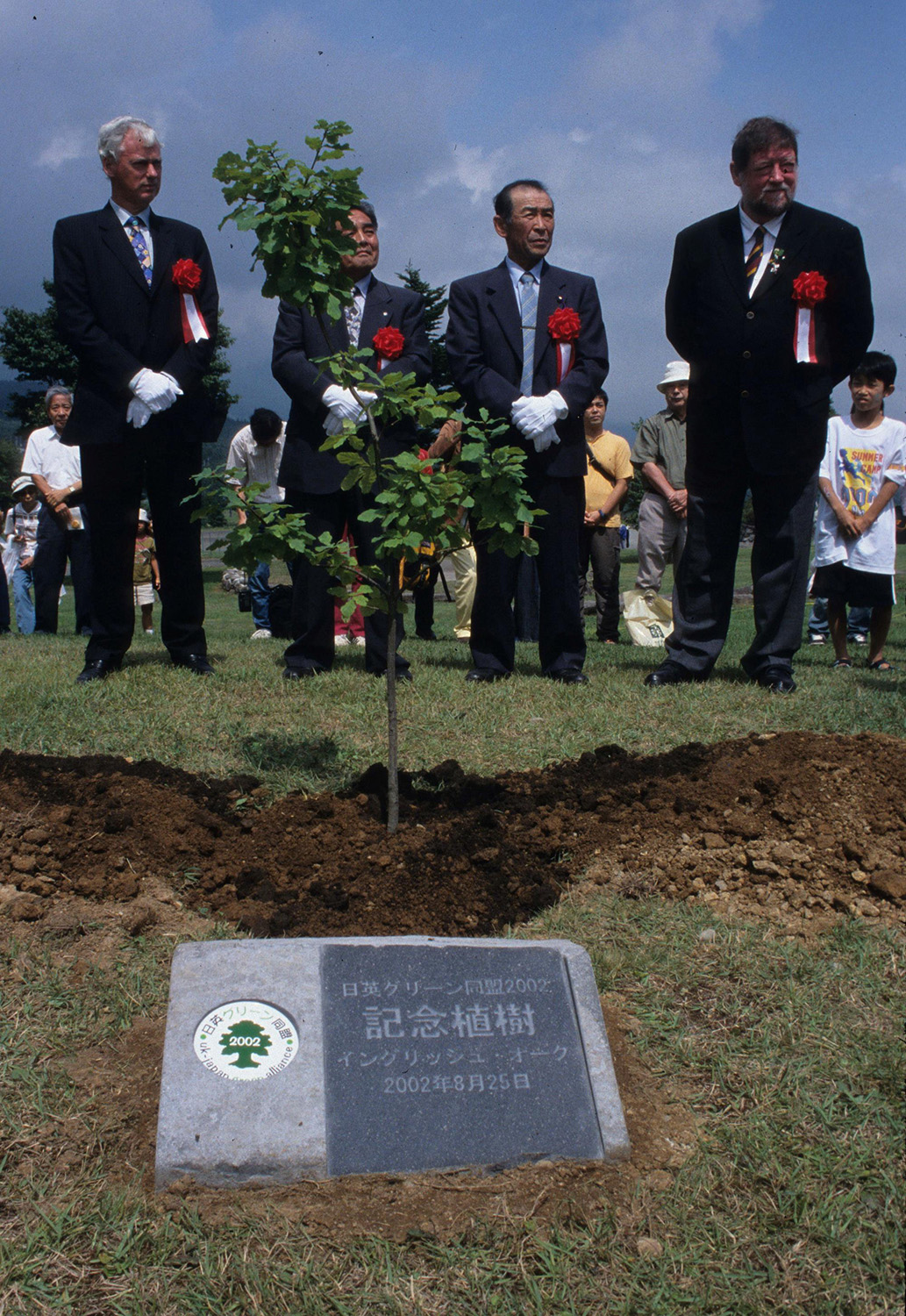
C.W.ニコル アファンの森財団は、ウェールズのアファン・アルゴード森林公園と「姉妹森」の提携を結んでおり、オークは2つの森の絆を象徴する存在です。材木としての価値に加え、ドングリは野生生物や家畜(特に、ブタ)の餌となり、樹皮は皮をなめすのに利用され、オークは英国のみならずヨーロッパの多くの国で、恐らく歴史的に見て最も価値ある木であったと考えられます。帆船の時代、海軍を有する国々にとっては間違いなく、オークはなくてはならないものだったでしょう。

アファンの森にオークを植える際、今は勇退されたアファンの守り人、林業家の松木さんと、上に述べたようなことを話し合いました。私たちは、オークには教育的価値がある、森林保護を考えるうえで格好のテーマになると考えたのです。松木さんは、「将来、外来種であるイングリッシュオークが繁殖して環境問題になる恐れがあるとしても、木はいつでも切り倒せる。伐採したオークは家具を作る材料として使えるし、炭を作ることも、そのまま薪として使うこともできる」と言いました。

今のところ、ここ長野のアファンの森でイングリッシュオークに関する心配事はただ一つ、枝や幹に醜いコブのできる寄生虫病にかかりやすいということです。私が植樹のお手伝いをしたり訪れたりした他の場所でも、イングリッシュオークは順調に育っています。
C.W.ニコル
2019年2月
写真提供:C.W.ニコル・アファンの森財団
ENGLISH OAK
Basically, our Afan woodland is dedicated to indigenous Japanese trees; however, a few foreign trees have been planted for educational purposes. One of these is the English oak (Quercus robur), which is the most symbolic tree of Britain, where I was born and raised. In many western countries you will see golden oak leaves and acorns decorating the epaulettes of leading military and police officers. Back in the times of Admiral Horatio Nelson, whose fleet, in 1805 defeated Napoleon’s alliance of France and Spain, in order to build a single hundred gun battleship such as Nelson’s own flagship HMS Victory took some two thousand mature oak trees, aged between a hundred and fifty and three hundred years old, plus seven hundred other trees such as elm and pine. Oak was the most highly prized and used hardwood.
In 2001 some two hundred oak saplings were brought into Japan and nurtured for a year in a Saitama nursery. On January 30, 2002 an oak sapling was planted in the compound of the British Embassy in Tokyo to celebrate the one hundredth anniversary of the Anglo-Japanese Alliance, an alliance that was particularly important to the navies of Japan and Britain. The planting of this oak was carried out by Sir Stephen Gommersal, the British ambassador, Kawaguchi Yoriko, then Minister of the Environment, a young boy from Okinawa, an elementary headmaster from Hokkaido and me, C.W.Nicol. I also helped plant English oak trees near the Douwa Kan in Kurohime, at the Marine Self Defense Force College in Etajima, in the grounds of Sanden Co. Ltd. in Gunma, and in our own woods. During 2002 English oaks were planted in two hundred locations all over Japan, principally with locations that had ties to Britain. This movement was called the ‘Green Alliance’ and I was one of the perpetrators.
As the C.W.Nicol Afan Woodland Trust is ‘twinned’ with the Afan ar Goed Woodland Park in Wales the oak also symbolizes this alliance. What with its use as timber, its value in acorns for wildlife and traditional domestic animal, feed, especially pigs, as well as for other uses such as the use of oak bark for tanning leather, the oak is probably the most historically valued tree not only in Britain, but through most of Europe as well, certainly for those nations that had navies during the era of sailing ships.
Our now retired forester, Mr. Matsuki and I discussed all of this when we did the planting. We both thought the tree would be valuable for education and as a topic for forest conversation, and Mr. Matsuki pointed out that if in the future the English oak grew and multiplied and became a problem, they could always be cut down and used for furniture, charcoal or just firewood. So far the only concern we’ve had with the English oak in the Afan woods here in Pagano is that the it seems vulnerable to a parasitic disease that causes ugly knobs on some of the branches. In all the other parts where I helped plant an oak, as well as in other sites that I’ve visited, the trees are flourishing.
C.W.Nicol
February , 2019
C.W.ニコル
作家・1940年イギリス南ウェールズ生まれ。1995年日本国籍取得。カナダ水産調査局北極生物研究所の技官・環境局の環境問題緊急対策官やエチオピアのシミエン山岳国立公園の公園長など世界各地で環境保護活動を行い、1980年から長野県在住。1984年から荒れ果てた里山を購入し「アファンの森」と名づけ、森の再生活動を始める。2005年、その活動が認められエリザベス女王から名誉大英勲章を賜る。2011年、2016年に天皇、皇后両陛下がアファンの森をご視察された。



